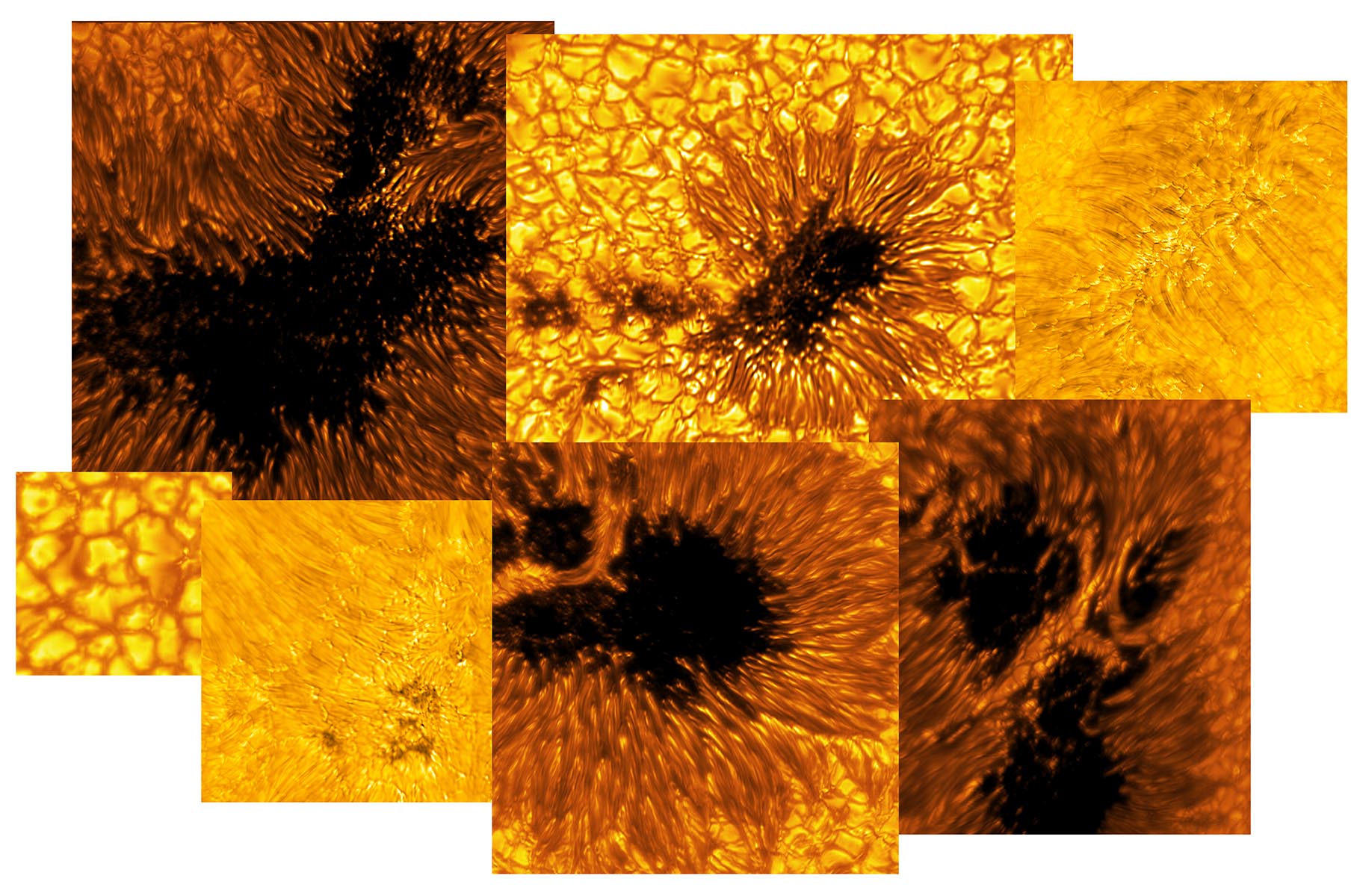NSO: New Images Released by NSF’s Daniel K. Inouye Solar Telescope

The National Science Foundation’s (NSF) Daniel K. Inouye Solar Telescope released eight new images of the Sun, previewing the exciting science underway at the world’s most powerful ground-based solar telescope. The images feature a variety of sunspots and quiet regions of the Sun obtained by the Visible-Broadband Imager (VBI), one of the telescope’s first-generation instruments.
The Inouye Solar Telescope’s unique ability to capture data in unprecedented detail will help solar scientists better understand the Sun’s magnetic field and drivers behind solar storms.
The sunspots pictured are dark and cool regions on the Sun’s “surface”, known as the photosphere, where strong magnetic fields persist. Sunspots vary in size, but many are often the size of Earth, if not larger. Complex sunspots or groups of sunspots can be the source of explosive events like flares and coronal mass ejections that generate solar storms. These energetic and eruptive phenomena influence the outermost atmospheric layer of the Sun, the heliosphere, with the potential to impact Earth and our critical infrastructure.
In the quiet regions of the Sun, the images show convection cells in the photosphere displaying a bright pattern of hot, upward-flowing plasma (granules) surrounded by darker lanes of cooler, down-flowing solar plasma. In the atmospheric layer above the photosphere, called the chromosphere, we see dark, elongated fibrils originating from locations of small-scale magnetic field accumulations.
The recently inaugurated telescope is in its Operations Commissioning Phase (OCP), a learning and transitioning period during which the observatory is slowly brought up to its full operational capabilities.
See all the images and read more at the National Solar Observatory’s website.
